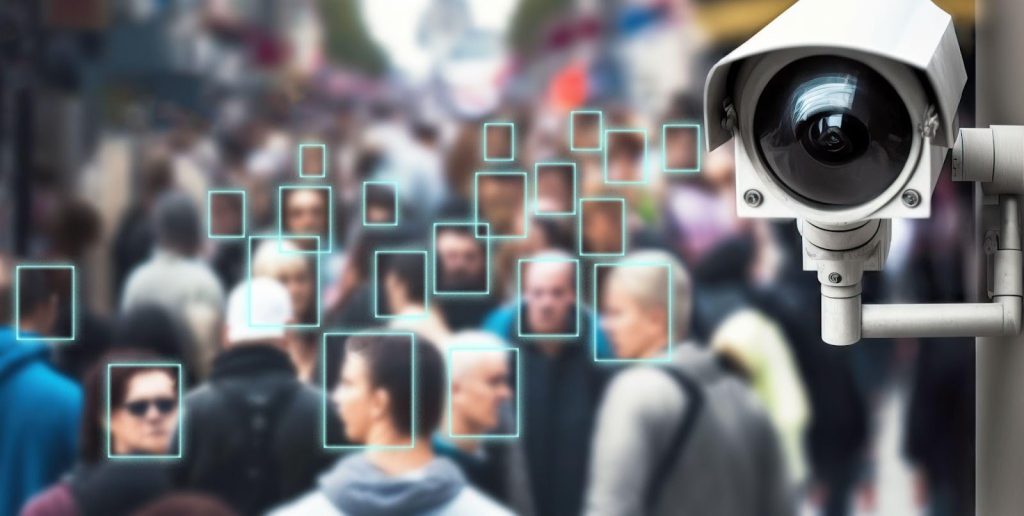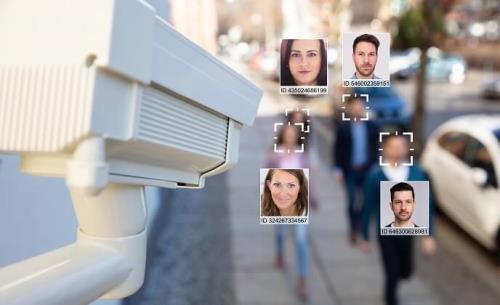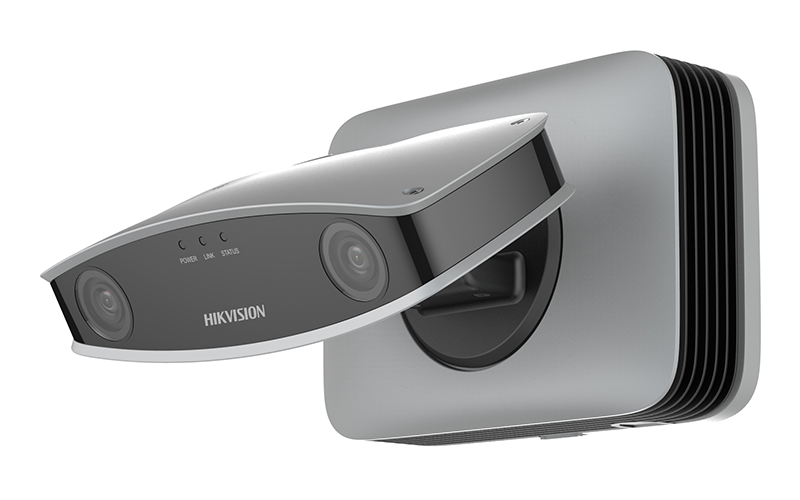Face Recognition Camera: Revolutionizing Security and Convenience

Face recognition cameras are changing security and daily life. They identify and verify faces in seconds.
In today’s fast-paced world, security and convenience are top priorities. Face recognition cameras offer a cutting-edge solution. These cameras use advanced technology to scan and recognize faces. They are used in many places, from airports to smartphones. Their ability to enhance security and simplify access makes them popular.
As technology evolves, these cameras become more accurate and reliable. Understanding their benefits and applications can help you decide if they suit your needs. Let’s explore how face recognition cameras work and their impact on our lives.

Credit: www.asmag.com
Introduction To Face Recognition Cameras
Face recognition cameras are transforming security and convenience. These advanced devices use technology to identify individuals by their facial features. In this section, we will delve into the details of face recognition cameras. We will explore what face recognition is and its fascinating history.
What Is Face Recognition?
Face recognition is a method of identifying or verifying a person using their face. This technology captures an image and compares it with stored data. It analyzes facial features like the distance between the eyes, nose shape, and jawline.
Face recognition systems use algorithms to match facial data with records. They are widely used in security systems, mobile devices, and social media platforms. The technology is fast, accurate, and non-intrusive.
Brief History Of Face Recognition Technology
The journey of face recognition technology began in the 1960s. Early systems required manual alignment of facial features. In the 1990s, computer-based systems improved accuracy and speed. Researchers developed algorithms to automate the recognition process.
In the 2000s, face recognition saw significant advancements. High-resolution cameras and powerful processors made real-time recognition possible. Today, face recognition is part of everyday life. From unlocking smartphones to airport security, it is everywhere.
Below is a table summarizing the key milestones in the history of face recognition technology:
| Decade | Milestone |
|---|---|
| 1960s | Manual alignment of facial features |
| 1990s | Development of automated algorithms |
| 2000s | Real-time recognition with high-resolution cameras |
| 2010s | Integration into mobile devices and social media |
Face recognition technology continues to evolve. Its applications are expanding rapidly. This technology is changing the way we interact with the world. Stay tuned for more insights into face recognition cameras in the upcoming sections.

Credit: www.youtube.com
How Face Recognition Cameras Work
Face recognition cameras are becoming more popular. They offer a new way to enhance security and convenience. But how do these cameras work? Let’s break it down into simple steps.
Core Technology
The core technology of face recognition cameras relies on machine learning and artificial intelligence. These cameras use advanced algorithms to identify and verify faces.
Here are the main components:
- Camera Lens: Captures the image of a person’s face.
- Image Sensor: Converts the image into digital data.
- Processor: Analyzes the image data to recognize facial features.
Data Processing And Storage
Once the camera captures a face, the data processing begins. This step involves several processes:
- Face Detection: The camera detects a face within the captured image.
- Feature Extraction: Key facial features are identified and extracted.
- Face Matching: The extracted features are compared to a database of known faces.
This process requires a lot of data. Therefore, data storage is crucial. The data can be stored locally or in the cloud. Storing data in the cloud offers scalability and accessibility.
Here’s a simple table to summarize the data processing steps:
| Step | Description |
|---|---|
| Face Detection | Identifies a face in the image |
| Feature Extraction | Extracts key facial features |
| Face Matching | Compares features to known faces |
Understanding these steps helps to appreciate the technology. It shows how sophisticated and reliable face recognition cameras are. They offer a high level of security and accuracy.
Key Benefits
Face recognition cameras are becoming more common. They offer many benefits for both security and convenience. Let’s explore some of these key benefits.
Enhanced Security
Face recognition cameras greatly improve security. They identify people and ensure only authorized access. This reduces the risk of unauthorized entry.
These cameras can also detect known criminals. They alert security personnel in real-time. This proactive approach helps prevent crimes before they happen.
| Security Features | Details |
|---|---|
| Unauthorized Access Prevention | Only recognized faces gain entry. |
| Criminal Detection | Alerts on recognizing known criminals. |
Improved User Convenience
Face recognition cameras offer convenience to users. No need for keys or cards. Users simply show their face to gain access.
This technology also speeds up processes. For example, employees can quickly enter their workplace. No more waiting to clock in.
- Quick and easy access
- No need for physical keys or cards
- Faster check-in processes
Face recognition technology is transforming security and convenience. Embrace these benefits to enhance your safety and daily routines.
Applications In Various Sectors
Face recognition cameras have a wide range of applications in various sectors. These advanced systems provide enhanced security and improved operational efficiency. Different industries are leveraging this technology to meet their specific needs.
Law Enforcement
Law enforcement agencies use face recognition cameras to identify suspects. They match faces from surveillance footage with criminal databases. This helps in tracking down fugitives and solving cases faster. Patrol officers also use mobile face recognition to check identities on the spot. This technology ensures public safety and reduces crime rates.
Retail Industry
The retail industry benefits from face recognition cameras in many ways. Stores use them to recognize VIP customers and offer personalized services. This improves customer experience and loyalty. Retailers also use these cameras to prevent theft. They identify known shoplifters and alert security staff immediately. Face recognition helps in analyzing customer behavior and preferences. This data helps in optimizing store layouts and marketing strategies.
Privacy Concerns
Face recognition cameras have become a common feature in many settings. They offer security and convenience. But they also raise privacy concerns. Understanding these concerns is crucial for users and developers. Let’s explore some key aspects related to privacy.
Data Security
One of the biggest concerns is data security. Face recognition cameras collect and store biometric data. This data must be protected from cyber threats. Here are some key points:
- Data encryption is essential.
- Access control measures should be in place.
- Regular security audits can help identify vulnerabilities.
Additionally, organizations must ensure that only authorized personnel can access the data. This helps prevent misuse and unauthorized sharing.
Ethical Implications
The use of face recognition cameras also raises ethical concerns. It’s important to consider the impact on individual privacy and freedom. Here are some ethical considerations:
- Consent: Users should be aware and agree to the use of their biometric data.
- Transparency: Organizations must be clear about how the data is used.
- Bias: Developers should ensure that the technology does not discriminate.
Addressing these ethical issues is crucial for gaining public trust. Organizations must be responsible and transparent in their use of face recognition technology.
Challenges In Implementation
Implementing face recognition cameras presents several challenges. These challenges range from technical limitations to public acceptance concerns. Understanding these hurdles can help in better adoption and use of this technology.
Technical Limitations
Face recognition cameras have technical limitations that impact their effectiveness. These systems rely on high-quality images. Poor lighting or camera quality can lead to errors. Below is a table showcasing common technical issues:
| Issue | Impact |
|---|---|
| Low Light Conditions | Reduced accuracy |
| Camera Resolution | Blurry images |
| Angle of Capture | Partial or distorted faces |
To mitigate these issues, ensure cameras are of high quality and positioned well. Regular maintenance and updates can also help.
Public Acceptance
Public acceptance is another major challenge. Many people have privacy concerns about face recognition cameras. They fear misuse of their personal data. To address these concerns, consider the following:
- Transparency in data use
- Clear policies on data storage
- Regular audits for compliance
Engaging with the public can help build trust. Educate them on the benefits and safeguards in place. This can lead to higher acceptance and smoother implementation.
Future Trends
Face recognition camera technology is evolving rapidly. Future trends suggest exciting developments. From advancements in AI to new potential uses, the landscape is shifting. This section will explore these promising trends.
Advancements In Ai
Artificial Intelligence is the driving force behind face recognition cameras. AI algorithms are becoming more sophisticated. They can now detect faces with higher accuracy. This improvement reduces errors significantly.
Machine learning plays a big role. Cameras learn from vast datasets. This learning helps in recognizing diverse faces. It also helps in low-light conditions. The result is clear and accurate face recognition.
Potential New Uses
Face recognition cameras have many new potential uses. Security is a primary area. These cameras can enhance public safety. They can identify wanted individuals quickly. This can prevent crimes effectively.
Retail stores benefit too. Cameras can recognize loyal customers. They can offer personalized experiences. This boosts customer satisfaction. It also helps in managing staff attendance.
Healthcare is another sector. Cameras can recognize patients. They can access medical records quickly. This ensures timely treatment. It also reduces administrative tasks.

Credit: us-legacy.hikvision.com
Frequently Asked Questions
What Is A Face Recognition Camera?
A face recognition camera uses AI to identify individuals. It analyzes facial features and matches them with stored data. This technology enhances security and personalization.
How Does Face Recognition Work?
Face recognition works by capturing an image of a face. It then compares it to a database of stored faces. The system uses algorithms to ensure accurate identification.
Are Face Recognition Cameras Secure?
Yes, face recognition cameras are generally secure. They use advanced encryption and algorithms. This helps protect data and prevent unauthorized access.
Can Face Recognition Cameras Be Used At Night?
Yes, many face recognition cameras can be used at night. They often feature infrared technology. This allows them to capture clear images in low light conditions.
Conclusion
Face recognition cameras offer enhanced security and convenience. They identify faces quickly. This technology provides peace of mind for homeowners and businesses. Easy to install and use, they fit well in modern security systems. Consider adding a face recognition camera to boost your security.
Stay ahead with this smart, reliable solution.
